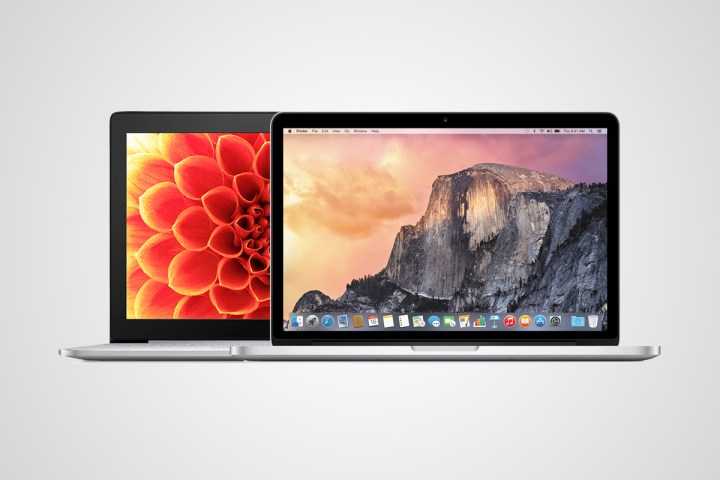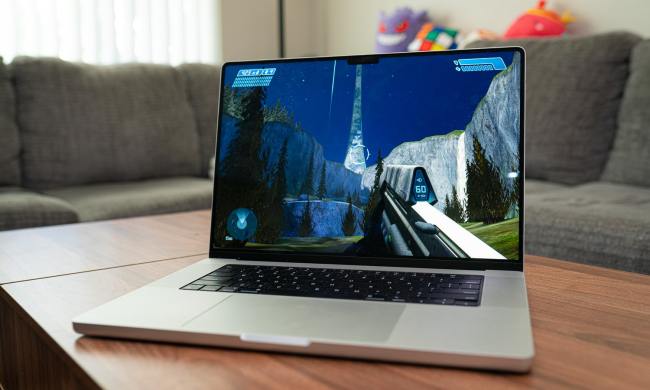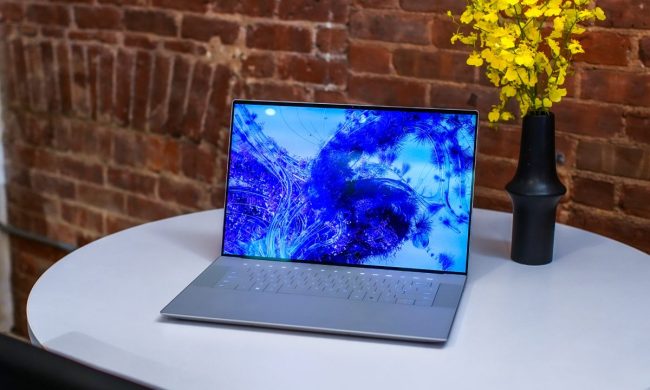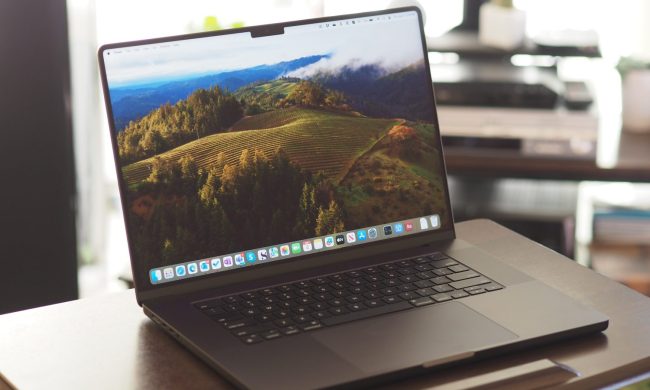
But a new MacBook Pro will cost you around $2,000 in the United States, and better-equipped models are even more expensive. That’s made a sizeable opening for manufacturers to offer more budget-oriented options, ones containing all-metal bodies and high-end components. The Asus Zenbook Pro UX501 is one such machine, with a similar hardware configuration as the MacBook Pro, and a starting price of just $1,500.
So which laptop should get your hard-earned cash? That mostly depends upon how much of it you’re willing to part with. If you happen to be comparing these models, we’ll assume that you’re contrasting the $1,500 Asus laptop with the base model MacBook Pro.
|
Zenbook Pro UX501 |
MacBook Pro (2015) |
|
| Dimensions | 15.1 x 10.0 x 0.8 (in) | 14.13 x 9.73 x 0.71 (in) |
| Weight | 5.0 pounds | 4.49 pounds |
| Keyboard | Full size (with tenkey) backlit keyboard | Full size backlit keyboard |
| Processor | Intel Core i7-6700HQ (6M Cache, up to 3.5 GHz) | Core i7 4770HQ |
| RAM | 16GB of 2133MHz DDR4 | 16GB of 1600MHz DDR3 |
| Graphics | GeForce GTX960M (2GB) | Intel Iris Pro 5200 (optional AMD graphics) |
| Display | 15.6-inch LED-backlit display with IPS technology | 15.4-inch LED-backlit display with IPS technology |
| Resolution | 3,840 x 2,160 touchscreen | 2,880 x 1,800 |
| Storage | 512GB SSD | 256GB SSD (optional up to 1TB) |
| Networking | 802.11ac, Bluetooth 4.0 | 802.11ac, Bluetooth 4.0 |
| Ports | USB 3.0 (3), USB Type-C/Thunderbolt, SDXC card reader, HDMI | USB 3.0 (2), Thunderbolt 2 (2), Mini DisplayPort, SDXC card reader, HDMI |
| Webcam | 1.2 megapixels | 720p |
| Operating System | Windows 10 | OS X El Capitan (Bootcamp for Windows support) |
| Battery | 96-watt-hour | 99.5-watt-hour |
| Price | $1,500+ | $2,000 |
| Availability | Now | Now |
| Review | 3.5 out of 5 | Coming soon |
Specifications
Despite its industry-leading reputation, the latest refresh of the MacBook Pro (mid-2015) left Apple fans with a sour taste in their mouths. The processor options were limited to the Core i7 4000-series, which is two years behind the latest machines on the market. There’s nothing wrong with the 2.2GHz quad-core Core i7-4770HQ in the base model, but its speed and efficiency are well behind the Core i7-6700HQ that powers the Zenbook Pro UX501. Likewise, both machines include 16GB of RAM, considerably more than most laptops, but the Asus model uses faster DDR4 memory with a speed of 2133MHz.
The Zenbook Pro uses a 512GB SSD drive, which is generous for its price point. Even on a more expensive machine, the MacBook Pro gets only 256GB in its SSD. The Zenbook Pro’s discrete GeForce GTX 960M graphics card is capable of handling mid-range PC games easily and granting an advantage for professional graphics programs, something that the MacBook Pro’s integrated Iris Pro 5200 chip can’t boast. Users will have to upgrade to the $2,500 model to gain access to AMD graphics.

Apple loves to tout the superiority of its high-resolution “Retina” displays, and indeed, without a little poking from Cupertino other manufacturers might still be marketing 720P panels as “HD.” But Asus has met and surpassed the challenge with the Zenbook. The display on the latter machine is slightly larger than the one on the MacBook, and features a full 4K resolution and touchscreen capabilities. The Zenbook Pro also wins a narrow victory in the webcam department, with a 1.2MP camera, versus a 720p version.
Ports on both machines are surprisingly comparable, however, given each has USB 3.0 ports — three on the Zenbook, two on the MacBook — an SD card reader, and HDMI. But whereas the MacBook options for two Thunderbolt 2 ports and a Mini DisplayPort for further external monitor support, the Zenbook Pro has a combined USB Type-C port for access to newer devices and monitors. In short, if you want easy access to a wider variety of monitors, the MacBook is the answer, but for access to the USB-C port, the Zenbook is the right choice. USB-C will likely be available in the next MacBook Pro revision.
Although both laptops offer similar battery sizes — 96-watt-hour on the Zenbook Pro, 99.5 on the MacBook Pro — Apple’s offering will likely last a bit longer on a single charge given it lacks a touchscreen and utilizes less powerful hardware.
For hardware that outpaces the Apple machine at nearly every turn, the Zenbook Pro easily wins the round.
Winner: Zenbook Pro UX501
Design
The MacBook Pro hasn’t received a significant design update in almost four years, since the Retina upgrade dropped dedicated disc drives and Ethernet ports. But it can be argued that an update isn’t necessary when you consider that Apple’s minimalist styling is timeless and undeniably appealing. That’s probably one of the reasons the MacBook Pro remains one of the best-selling laptops on the market. Its design is certainly an inspiration for some of its competitors like the Zenbook Pro, which adopts a similar aluminum unibody. The ASUS machine distinguishes itself with an etched metal lid, but it’s impossible to deny the similarities.

The Apple machine is smaller and lighter than the Zenbook Pro, and its longest edge is almost an inch longer than the MacBook Pro. With a screen that’s only 0.2 inches smaller, the MacBook Pro makes a much better use of its space, and it’s also half a pound lighter. But the Zenbook has an ace up its sleeve. Both machines offer full-sized keyboards, but Asus’ model includes a 10-key area that’s better for rapid data entry.
Despite its lower resolution and lack of touchscreen capabilities, the MacBook Pro’s display is superior thanks to Apple’s slavish dedication to image quality. The Zenbook Pro’s screen isn’t terrible, but an extremely glossy coating and middling scores for color accuracy, gamma, and contrast means that images and text will generally look better on the MacBook. Apple wins the touchpad fight as well. The large and accurate pad on the MacBook Pro would be superior even without its “Force Touch” pressure sensitivity. The Zenbook Pro’s touchpad has been reported to be slow and register errant clicks from palms.
Despite somewhat dated design language, Apple’s machine wins out for both finish and usability. It’s clear why even Windows users like the MacBook Pro.
Winner: MacBook Pro
Availability and price
The Zenbook Pro UX501 is available in a single model, the $,1500 machine with the top-of-the-line specifications listed above. While we’d prefer the option for a larger hard drive or SSD and perhaps a non-touch display, it’s impossible to deny that Asus offers an admirable machine at a pretty good value.
It’s just as impossible to deny that Apple doesn’t. The $2,000, 15-inch entry MacBook Pro uses two-year-old processor architecture, a lower-resolution screen, integrated graphics, a smaller SSD drive, and lacks a USB Type-C port. Users who want faster a processor, a larger SSD, or discrete graphics will have to pay even more… starting with the $2,500 model and going up.
You pay more for the Mac, obviously. On the other hand, its higher price gives you the opportunity to select hardware more to your liking. The well-configured Zenbook either works for you, if it doesn’t. And if it doesn’t, you don’t have the choice of a different configuration.
Both machines come with a standard one-year warranty, but the Asus laptop offers so much more bang for the buck. For high-end hardware on a slim budget, the Zenbook Pro wins by a landslide. It’s also worth noting that running Windows on a MacBook Pro will cost you even more.
Winner: MacBook Pro
Conclusion
The MacBook Pro’s reputation isn’t unearned: if you ignore part lists and spec sheets, it’s clearly the superior machine here. Between its lighter body, high-quality display, terrific touchpad, and the general fit and finish, this 15-inch machine has usability and quality that are second to none. Apple offers the cream of the crop — at least until you start looking underneath the hood.
If high-end specs and value are of more interest to you than general quality, the Zenbook Pro UX501 is hard to ignore. Discreet graphics, a 4K display, a newer processor, and a larger SSD drive give the machine an advantage over the entry-level MacBook, even at the same price. The Zenbook Pro is the easy choice for penny-pinchers.
But the Zenbook Pro’s flaws, like its too-glossy screen, bulkier body, and lack of customization, make it harder to recommend. There’s definitely reason to buy the Asus over the Apple, but we think most users will still be happier with Mac.




